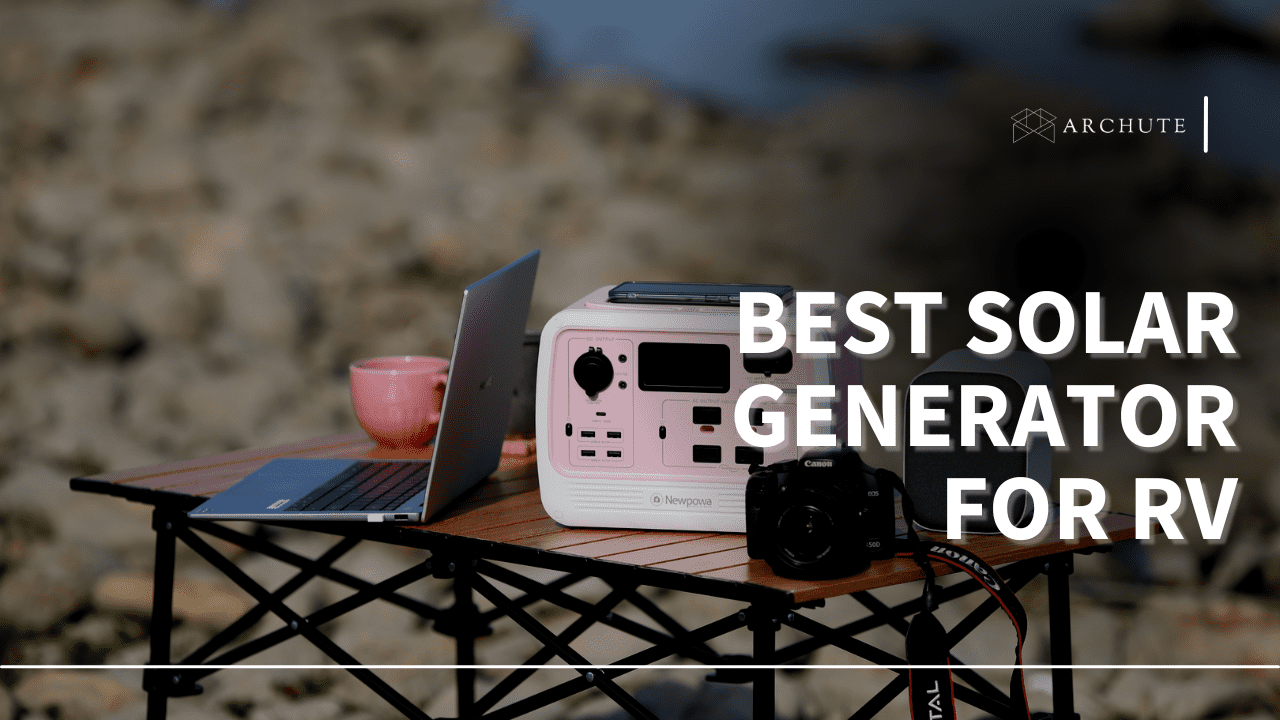If you're after a polished yard with clean edges, a weed eater is a must-have tool. Eco-friendly battery power is where the weed whacker industry is headed, ensuring that you don't have to deal with the hassle of gas or extension cords. The best battery-powered weed eater allows you to bring your lustrous, lush lawn to life with much more convenience and efficiency.
Here's our roundup of the 5 best battery-powered string trimmers that can make slicing your grass objectively easier and as effortless as possible.
1. Earthwise LST02010
- Powerful 20-volt trimmer with 2.0Ah lithium-ion battery and fast...
- Trimmer edger with 10" cutting width with auto-feed; Spool and...
- Eco trimmer with an adjustable handle and telescopic pole so you...
- Cordless, lightweight and easy to use; Battery-powered,...
- Earthwise Power Tools by ALM 20-volt battery that is compatible...
The LST02010 is certainly the biggest or most powerful string trimmer out there, but it more than makes up for the smaller size by being impressively lightweight and easy to use, not to mention well-priced. This is an excellent choice if you want a solid string trimmer for simple work around the house.
It runs on a 20V lithium-ion battery with great battery life, enough to last your average yard trim. The 10-inch cutting swath might seem small for longer jobs, but it's certainly a plus when you get to tight spots. The 8,800 RPM line speed is powerful enough to let you breeze through the task.
At only 4.4lbs, the LST02010 is very easy to use and light enough for most people to carry over an extended period. Its auto-feed spool also makes it simple to load. Additionally, the flip-down edge guard makes it more convenient to edge around a landscaping bed.
Pros:
Cons:
2. Greenworks 21302
- 40V STRING TRIMMER – powers through the toughest grass and...
- 13” CUTTING PATH - .065” line, auto feed head for quick and...
- TRIMMER / EDGER (2-IN-1) – 90-degree rotating head with edging...
- VARIABLE SPEED TRIGGER – allows you to control cutting speed on...
- LIGHTWEIGHT / EASY TO USE – ultra lightweight design, along...
The Greenworks 21302 strikes a neat balance between size, power and affordability. This 9.3lb string trimmer runs on a 40V battery, powering the string at a remarkably high speed of 9,000 RPM, enough to slice through thick, tough weeds. It features a 13-inch cutting swath, which is more than sufficient for regular household tasks. And all that for one of the most pocket-friendly prices we've seen around.
The Greenworks 21302 isn't just a battery-powered string trimmer; it doubles as a wheeled edger with a head that rotates 90 degrees. This, plus a telescopic shaft, make it very easy for whacking or edging in hard-to-reach spots. On top of it, this weed eater runs on a 2.0 ah battery that can last up to an hour on a full charge, which is plenty of time to trim an average lawn thoroughly.
Pros:
Cons:
3. WORX WG184
- [2x20V=40V] Powered by two 20V MaxLithium PowerShare batteries...
- [2-IN-1] Easily converts from a trimmer into an in-line wheeled...
- [SAME BATTERY, EXPANDABLE POWER] Worx Power Share is compatible...
- [COMMAND FEED] Innovative Command Feed spool system offers...
- [VARIABLE SPEED THROTTLE] Increase the speed when you run into...
If you're looking for a versatile tool, it's difficult not to consider the WORX WG184 in the battery-powered models. It converts with ease to a wheeled edger, plus it has a variable speed trigger to regulate the RPM depending on the type of grass you're cutting. Moreover, it features an adjustable handle so that you can find your most comfortable working position and a pivoting head that's ideal for slopes and uneven terrain.
Not only is the WG184 versatile, but also convenient. It has a Command Feed automatic spooling system, allowing you to load a new line at the press of a button. Although it weighs 8.6lbs, it's still light enough to carry around for a reasonable period of time. Besides, a 13-inch cutting swath means you get more work done in less time.
Pros:
Cons:
4. BLACK+DECKER 20V Max String Trimmer
- 2IN1 DESIGN – Easily rotates 180 degrees from a cordless string...
- ADJUSTABLE HEIGHT AND SOFT-GRIP HANDLE – Provide convenient,...
- AFS AUTOMATIC FEED SPOOL – Continuously feeds trimmer line...
- DEBRIS REMOVAL – Sweeper is ideal for clearing driveways,...
- QUIET OPERATION – Keeps noise to a minimum while you work.
If you're looked for a good bargain in a battery-powered string trimmer, the BLACK+DECKER LCC222 string trimmer/edger plus a sweeper is a great choice. This weed eater is perfect for trimming and clearing away fallen leaves and other waste.
It comes with two 20V MAX Li-Ion batteries, giving you a backup in case the first one runs out of juice or malfunctions midway. It weighs only 5.2 pounds, making it fairly easy to use, all the more with an automatic feed spool. It's also notably quieter than other battery-powered string trimmers, so it's ideal for neighborhoods with noise restrictions.
Since the LCC222 is relatively smaller, it's also less powerful. The 10-inch cutting swath might also be limiting in large spaces. It's also worth noting the battery takes an hour to charge but only runs for 30 minutes.
Pros:
Cons:
5. RYOBI 40V Lithium-Ion String Trimmer
- Attachment capable: accepts RYOBI expand-it attachments and other...
- 40-Volt lithium-ion high capacity battery and 90-minutes charger...
- 13 in. to 15 in. adjustable cutting width for longer run time or...
- Reel-easy bump-feed string head for fast and easy reloading
- Variable speed trigger for cutting control
RYOBI, a specialist battery-powered tools manufacturer, has demonstrated its experience and expertise with this feature-packed 40V string trimmer.
One of its downright selling points is the array of "expand it" attachments that allow this battery-powered weed eater to do the work of many. This model features a variable speed trigger that lets you adjust the string's RPM to save power and improve run time. You can also adjust the cutting swath between 13-15 inches for even more efficient power consumption.
The battery-powered string trimmer is sizeably large, hence more powerful, and that comes with an added cost too. But if you're looking for that extra power, this cordless electric string trimmer should fit the bill.
Pros:
Cons:
What to Consider in the Best Battery-Powered Weed Eater
What is a Weed Eater?
A weed eater, also known as a weed whacker or string trimmer, is a power tool used to trim grass and weeds, much like a lawn mower. However, a weed eater allows you to access spots that might be hard to reach with a lawnmower or in places you simply don't want to risk the lawnmower, like a landscaping bed. Typically, string trimmers feature a long shaft with a cutting head on one end. The trimmer head spins a single or dual nylon string, which acts as the "blade" that slices through grass and weeds.
Why Battery-Powered?
Battery power is becoming vastly popular in power tools, especially because batteries present an eco-friendly alternative to gas. Battery-powered weed eaters are also better for your health since they run quieter with less vibration. These cordless electric string trimmers also tend to be lighter, hence easier to maneuver than corded ones which need to stay plugged into a power source. To cap it off, battery power also means less maintenance, mainly because you don't have to store or mix fuel for them.
Most battery-powered weed trimmers run on lithium-ion (Li-on) batteries, although a few also run on nickel-cadmium (NiCad) batteries. Li-ion batteries are more powerful, smaller and hold charge longer, but they are also less expensive. NiCad batteries are less powerful, larger and suffer from "memory effect"; if the battery is used before full charge-or charged before the battery drains completely-it "remembers" the charge levels and never holds a longer charge moving forward.
Nevertheless, there are a few noteworthy drawbacks to a battery-powered string trimmer. For starters, it can only run as long as the battery, which is typically up to an hour on the higher end. This means they're not ideal for tasks that would take a long time. Having to stop and recharge the battery midway -which can take a lot of time- can be extremely inconvenient.
That highlighted, these are the factors you need to keep in mind when you're looking for the right battery-powered weed eater for your needs:
1. Voltage
Voltage determines how much operating power you'll get from a battery. The heavier the task, the more powerful the weed eater needs to be. Therefore, for heavy-duty jobs, such as cutting thick overgrown grass or weeds, you'll want a battery with higher voltage.
The current string trimmer industry provides rechargeable batteries averaging from 18V-60V. Keep in mind that you normally have to dig a little deeper into your wallet for more power. It's, therefore, all about finding the right balance between your budget and having a powerful string trimmer for heavy-duty tasks.
2. Line Speed
Line speed, measured in RPM (rotations per minute), refers to how fast the string spins. Just like with voltage, the tougher the task, the more line speed you'll need to handle the job.
3. Cutting Width
Also known as cutting swath, determines how wide a path the weed eater will cut through grass or weed in a single pass. Consequently, this also determines how long it takes to trim a particular area.
Most weed eaters on the market today have 10 to 18-inch swath widths. The wider the cutting width, the more power the string trimmer needs. However, if you anticipate cutting grass and weed in tight spots, it might be more practical to use a smaller cutting swath.
4. Line Diameter
This is the thickness (or diameter) of a string that a trimmer can hold. The thicker the "blade", the thicker the grass it can slice through. All the trimmers featured on this list can hold anywhere between 0.0065 to 0.08-inch strings, which is generally the recommended diameter for residential use. If you're looking at commercial-grade weed eaters for more intensive tasks, you'll certainly need thicker strings, and these will also cost more money.
5. Weight
You'll be carrying your weed eater around your yard, which makes weight a critical consideration. If you go for an option that's too bulky for you, you'll end up wearing yourself out quicker, meaning you can't use the weed eater for an extended period at a time.
Therefore, it's important to know the limits of your upper body strength so that you can buy the appropriate weed eater. Fortunately, most modern cordless string trimmers come with shoulder strap attachments to make them easier to carry.
6. Vibration & Noise
Previously, vibrations were an immense concern when buying a cordless electric string trimmer. Recent models have come a long way with vibration control. The weed eaters featured on this list all come with acceptable levels, ensuring that you have a breeze trimming your yard.
The same goes for noise levels. Battery-powered trimmers have a massive noise pollution advantage over gas-powered string trimmers. For context, gas trimmers emit around 90dB, equivalent to a motorbike passing 25 feet away. In comparison, a cordless string trimmer produces around 77dB, about the same loudness as living room music.
7. Runtime
Generally, residential lawns require only about 15 to 30 minutes for a nice, clean trim. Most battery-powered string trimmers can deliver this comfortably, although some lower voltage models might fall slightly short of the mark. That being said, if you're getting a for a larger lawn or commercial use, you'll need higher capacity batteries or get an additional backpack battery to use on the move.
While you're looking at this, you can consider going for a brushless motor string trimmer. It gives you more run time, longer life and takes less maintenance than brushed motors. That being said, a brushed model is equally okay if you're only looking at a small yard. But if you really want a complete gas replacement, a brushless motor string trimmer is the way to go.
8. Price
Like any other purchase, you'll also want to look at how much you can and are willing to spend on a string trimmer. String trimmers normally range from under $100 to about $500. You should be looking to spend more if you're going for a high-voltage, premium or commercial-grade model. When it comes to a battery-powered string trimmer, it's all about finding the right balance between functionality for your yard and affordability.
Tips for Buying a Cordless String Trimmer
1. Prioritize power. Nickel-cadmium batteries mean more frequent charges, less battery life and worse still, a drop in performance as the battery runs low. On the other hand, lithium-ion batteries require fewer recharges, last longer per single charge and have better battery life overall, performing consistently throughout a discharge cycle.
2. A lightweight cordless trimmer is easier to use. You want your tool to be lightweight enough to carry around yet sturdy enough to handle tough weed and debris. Weight largely depends on the battery type, where lithium-ion batteries are significantly lighter than nickel-cadmium batteries.
3. Keep an eye out for innovative designs. Curved shaft trimmers are more suited to open spaces since they are more ergonomic and easier to use. Conversely, straight shaft trimmers are suited to smaller lawns with lots of tight corners. If you're torn in between, you can opt for a 2-in-1 model that offers both configurations.
Frequently Asked Questions about Battery-Powered Weed Eaters
1. Can you use battery-powered string trimmers on wet grass?
Yes. However, this is not recommended, mainly because wet grass is tougher to cut, which drains the battery faster. More so, you're more likely to get a sloppier trim than you would with dry grass.
2. Are battery-powered weed eaters any better than their gas counterparts?
As far as residential use goes, yes. Some might even argue they're better overall than corded electric string trimmers and gas string trimmers.





















